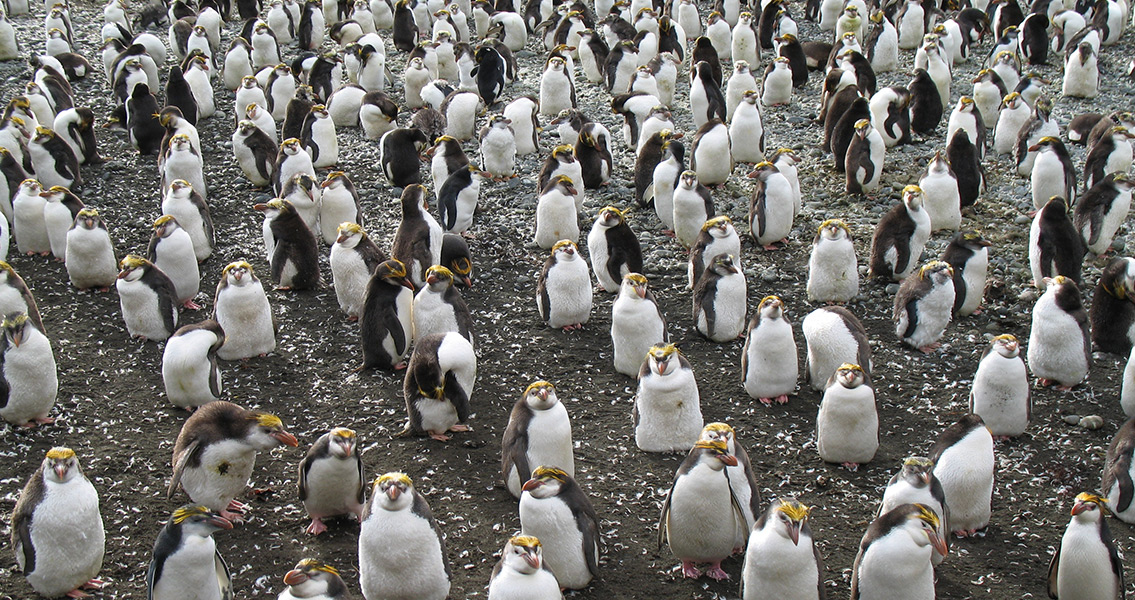<![CDATA[Losing the ability to fly did not have a substantial impact on the brain anatomy of penguins, according to a new study published in the Journal of Anatomy. Researchers from the University of Texas at Austin argue that although the loss of flight was responsible for modern penguins’ unique way of walking, it didn’t cause any major changes in the animals’ brain structure. The conclusions have been reached following examination of the skull of the world’s oldest known penguin fossil, from the mid to late Paleocene era in New Zealand. “What this seems to indicate is that becoming larger, losing flight and becoming a wing-propelled diver does not necessarily change the [brain] anatomy quickly,” said James Proffitt, a graduate student at University of Texas’ Jackson School of Geosciences and the leader of the research, in a press release from the University of Texas. Despite modern penguins exhibiting a unique brain, one remarkably different from those of their ancestors, these changes didn’t take place until long after the birds had evolved away from flying. “The way the modern penguin brain looks doesn’t show up until millions and millions of years later.” Proffitt explained. The 60 million year old penguin whose remains were used in the study was likely to have lived a life very similar to modern penguins. Its age, and its position in the line of penguin evolution meant it provided invaluable insights for the study. “It’s the oldest [penguin] following pretty closely after the loss of flight and the evolution of flightless wing-propelled diving that we know of”, Proffitt said. Exactly why penguins evolved to not fly is a mystery that plagued scientists for centuries. It seems massively impractical, Emperor penguins for example, have to walk distances of up to 60km from their rookeries to the sea, a journey which takes several days but could be achieved in a matter of days if the birds flew. Similarly, many penguins are the target of predators such as leopard seals at the point they enter the ocean – a problem which could be avoided if they were able to fly. A 2013 study by scientists from the University of Aberdeen used comparisons with Guillemots to conclude that there is no way for a bird to develop wings which are good for both flying and swimming. According to the scientists, as penguin wings evolved to make them better swimmers, the amount of energy they needed for flying became too great. Proffitt and his partners on the latest study, Julia Clarke; a professor in the Jackson School’s Department of Geological Sciences, and Paul Scofield; the senior curator of Natural History at the Canterbury Museum in Christchurch, New Zealand, assumed that the loss of flight would have impacted brain structure, making the brains of ancient and modern penguins similar in certain regions. Due to the fact the shape of a bird’s skull is influenced by the structure of its brain, the team were able to use X-ray CT scanning to capture digitally the minute details of the penguin skull’s anatomy before applying computer modelling software to form a digital mold of the brain, called an endocast. Their results showed that in reality the ancient penguin’s brain anatomy had more in common with petrels and loons than modern penguins. If the peculiarities of penguin brain structure were a consequence of its initial loss of flight, the changes would have been apparent in the Paleocene skull. Similarities between the ancient penguin and modern diving birds suggest that the actual act of diving could be responsible for the differences in brain structure. “The question now is do the old fossil penguins’ brains look that way because that’s the way their ancestors looked, or does it have something maybe to do with diving?” Proffitt said, in the press release. For more information: www.wileyonlinelibrary.com]]>
Penguin Brains Were Unaffected By Loss of Flight
